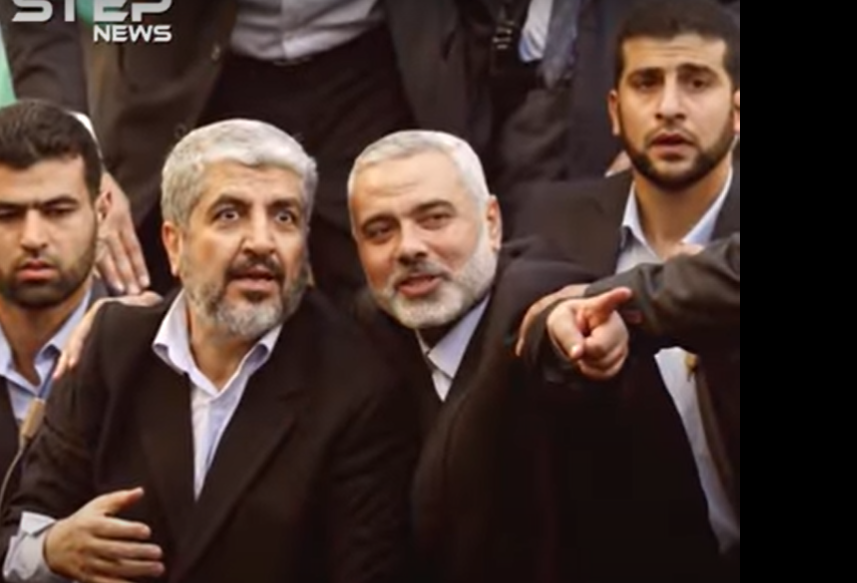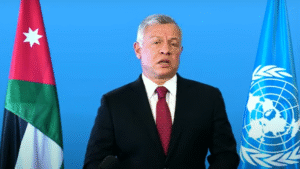As the conflict unfolds, fear intensifies among those who have lost their homes.
There’s a rising concern that Israel might attempt to forcibly relocate them to Egypt or Jordan.
Over a million Palestinians have moved from the northern to the southern Gaza Strip to avoid the ongoing conflict between the IDF and Hamas.
Living in tents in the western part of the southern region, they endure the challenges of displacement, having lost homes and property, facing a difficult winter in open spaces.
Despite a prevailing animosity toward Israel, reports from Gaza suggest that many displaced individuals harbor resentment toward Hamas for what they perceive as irresponsible actions leading to their current predicament.
As time progresses, this discontent may extend even to Hamas supporters.
The severe humanitarian crisis stems from a brutal attack by Hamas’s military wing on Israeli settlements adjacent to the Gaza Strip on October 7, resulting in a significant loss of life.
The toll includes over 14,000 Palestinian fatalities and about 30,000 wounded, with the war far from concluded, foretelling more casualties.
Hamas’s alignment with the Iranian and “Muslim Brotherhood” agendas has exacerbated the Palestinian problem, resulting in substantial bloodshed on both sides in the name of Jihad, the war against “infidels,” and the liberation of Palestine “from sea to river.”
The reprehensible acts, including the brutal killing of elderly individuals, Israeli women, children, and babies, coupled with rape and looting by Hamas, have tarnished the organization’s global image.
Despite efforts to reshape its perception through social media campaigns, Israel is anticipated to reveal more details about Hamas atrocities over time, exposing the group’s use of Gazans as human shields.
Hamas struggles to defend its actions against innocent Israeli citizens, constituting war crimes or crimes against humanity, prohibited by Islamic and international laws. Except for Iran, no country is expected to support such actions, which have significantly damaged the Palestinian cause.
Moderate Arab countries, including Saudi Arabia, Egypt, Jordan, the Gulf States, and Morocco, disapprove of Hamas’s actions, recognizing their adverse impact on Islam.
These nations acted responsibly to prevent the situation from spiraling out of control in the aftermath of the Hamas massacre and Israel’s response.
Hamas responds to these disapprovals with a smear campaign, especially against Saudi Arabia, by the “Muslim Brotherhood” movement on social media, accusing them of betraying the Palestinian cause.
The prevailing fear among Gaza Palestinians is Israel’s potential attempt to forcibly relocate them to the Sinai Peninsula and Jordan, clearing Gaza of its inhabitants. Seventy-five years after the 1948 Nakba, Palestinians face what they perceive as a new catastrophe, with many becoming displaced again due to Hamas’s actions.
Despite a four-day ceasefire, Israel appears determined to dismantle Hamas’s rule, destroy its military infrastructure, and eliminate its leaders. The cost of Hamas’s reckless adventure is expected to be high, leading to its loss of power in Gaza.
Hamas’s refusal to acknowledge the existence of the independent Zionist entity, Israel, demonstrates a lack of acceptance of geopolitical realities. The recent conflict has highlighted Israel’s military and economic strength, social cohesion, and resilience. Attempts by groups following the “Muslim Brotherhood” or Iranian agenda to defeat Israel are predicted to result in a fate similar to militias in Syria, Iraq, and Yemen — millions of displaced persons and refugees with an uncertain future.
Hamas, driven by the Iranian agenda, sacrificed Gaza residents, only to be abandoned by Iran following uncoordinated attacks on Israel. The Palestinians in Gaza now endure a new Nakba due to the mistakes of Hamas, paying the price for the organization’s misguided actions.




